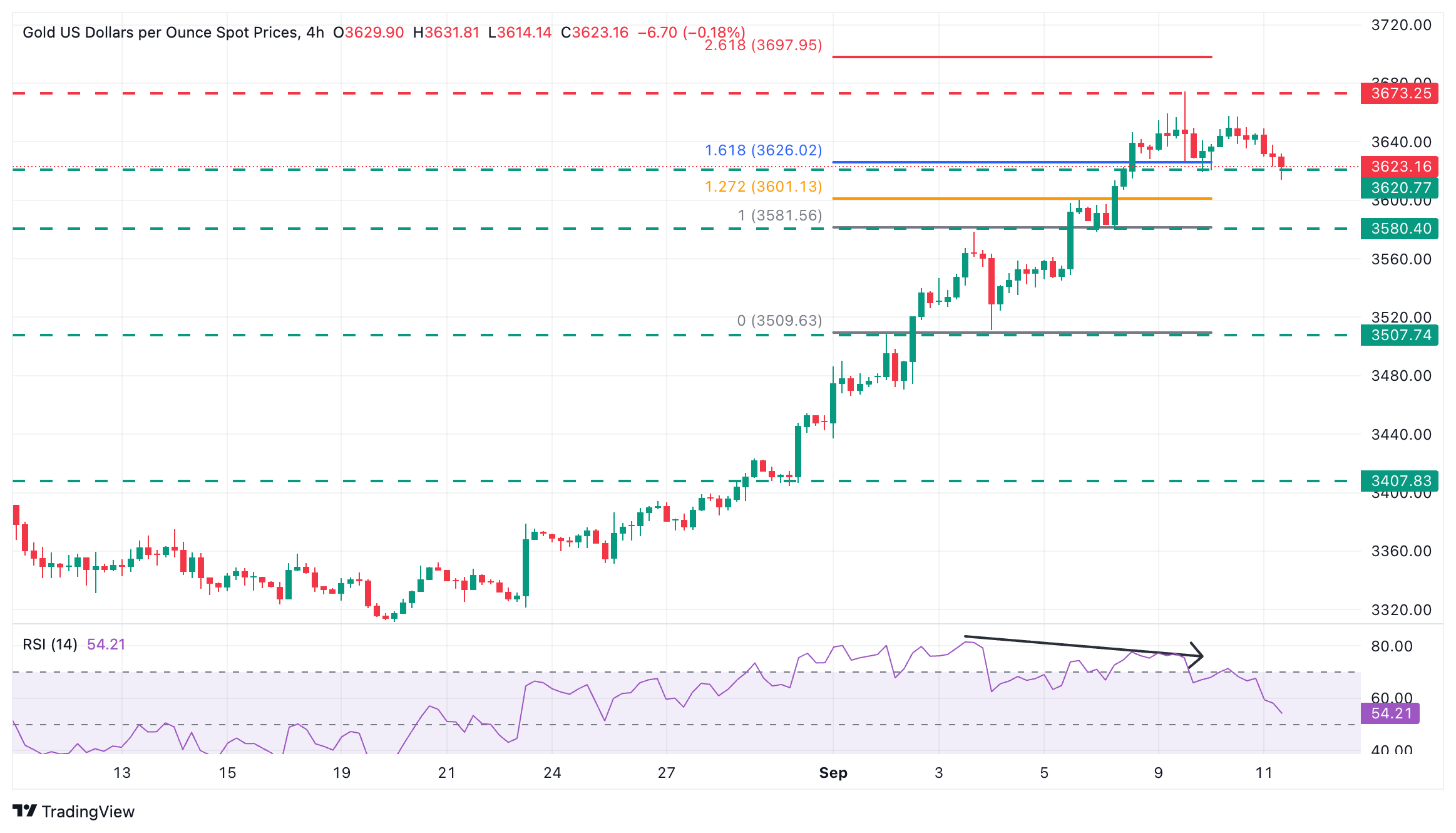Gold Price Forecast: XAU/USD retreats to $3,620 amid US Dollar strength

- Gold retreats from highs to test $3,620 lows amid US Dollar's strength.
- The US Dollar Index appreciates for the third consecutive day, unfazed by investors' bets on Fed monetary easing.
- XAU/USD is showing signs of topping below $3.670.
Gold failed to find acceptance above the $3,660 area and is trading lower on Thursday, returning to $3,620, as US Dollar appreciates for the third consecutive day, with all eyes on the US Consumer Prices Index release.
XAU/USD is struggling amid generalized US Dollar strength, as investors await the US Consumer Price Index release. Consumer prices are likely to confirm that inflationary pressures remain at moderate levels, paving the way for a Federal Reserve interest rate cut next week.
Technical analysis: XAU/USD might have reached a major top

The technical picture suggests that the pair is ripe for a healthy correction after rallying 10% since mid-August.. Gold's failure to breach the $3,660-3,670 resistance area is giving fresh hope for bears, while the bearish divergence and the sharp decline on the 4-hour RSI complete the potential bearish scenario.
Gold sellers, however, would have to confirm the breach of the $3,620 support area to push the pair lower towards the weekly low, which is also the September 5 high, at $3.580. Further down, the next target is the September 4 low, at $3,510.
A bullish reaction, on the other hand, will find resistance at the mentioned $3,660-3,670 area (September 9, 10 highs). Above here, the 261.8% Fibonacci extension of the September 3-4 pullback, at the $3,700 area, seems a plausible target for bulls.
Gold FAQs
Gold has played a key role in human’s history as it has been widely used as a store of value and medium of exchange. Currently, apart from its shine and usage for jewelry, the precious metal is widely seen as a safe-haven asset, meaning that it is considered a good investment during turbulent times. Gold is also widely seen as a hedge against inflation and against depreciating currencies as it doesn’t rely on any specific issuer or government.
Central banks are the biggest Gold holders. In their aim to support their currencies in turbulent times, central banks tend to diversify their reserves and buy Gold to improve the perceived strength of the economy and the currency. High Gold reserves can be a source of trust for a country’s solvency. Central banks added 1,136 tonnes of Gold worth around $70 billion to their reserves in 2022, according to data from the World Gold Council. This is the highest yearly purchase since records began. Central banks from emerging economies such as China, India and Turkey are quickly increasing their Gold reserves.
Gold has an inverse correlation with the US Dollar and US Treasuries, which are both major reserve and safe-haven assets. When the Dollar depreciates, Gold tends to rise, enabling investors and central banks to diversify their assets in turbulent times. Gold is also inversely correlated with risk assets. A rally in the stock market tends to weaken Gold price, while sell-offs in riskier markets tend to favor the precious metal.
The price can move due to a wide range of factors. Geopolitical instability or fears of a deep recession can quickly make Gold price escalate due to its safe-haven status. As a yield-less asset, Gold tends to rise with lower interest rates, while higher cost of money usually weighs down on the yellow metal. Still, most moves depend on how the US Dollar (USD) behaves as the asset is priced in dollars (XAU/USD). A strong Dollar tends to keep the price of Gold controlled, whereas a weaker Dollar is likely to push Gold prices up.






